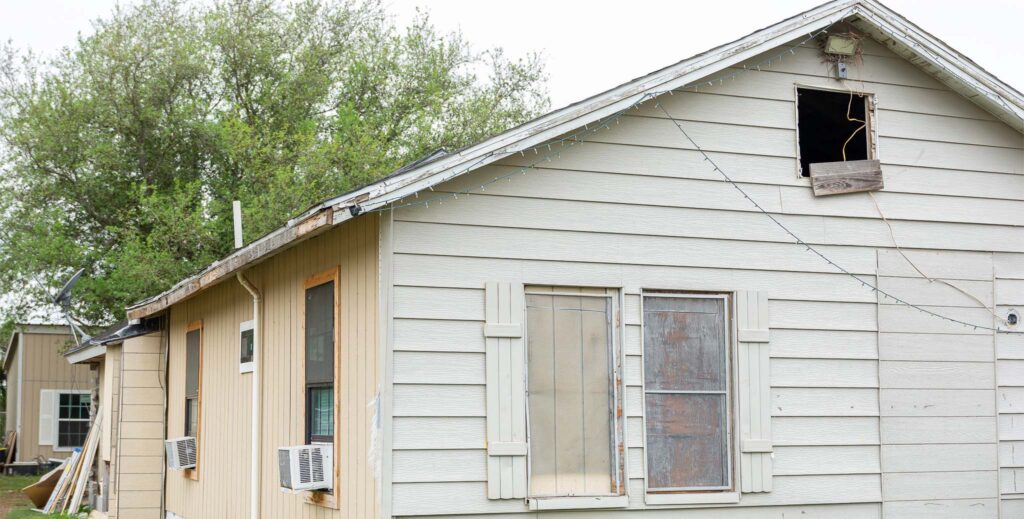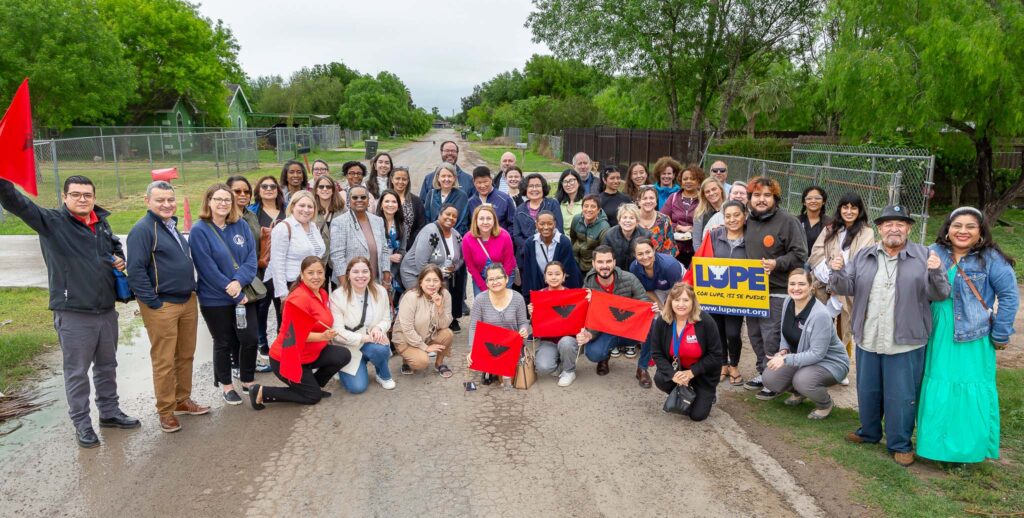Between County Roads – A Reflection on the Health Hardships and Resilient People of South Texas Colonias

The Rio Grande Valley is a vibrant hub of US-Mexico hospitality. The distinct foods, rich bi-national culture, and remarkable people create an inviting atmosphere where residents and travelers alike feel at home. Towering palm trees span the terrain between Raymondville to Rio Grande City; painting a picture-perfect view across the four counties that comprise the region. However, behind its tropical setting and charming communities, there is a different picture of the Rio Grande Valley some may not always see.
Resilient People, Structural Inequity

Isolated from nearby towns are rural subdivisions referred to as ‘colonias;’ found throughout unincorporated areas along the Texas-Mexico border. Colonias are home to families with mixed immigration status; children may have a United States citizenship, but their parents may not. While their homes vary in size and appearance, families who live in colonias experience similar challenges. A history of insufficient infrastructure and investment have created barriers that impact health and well-being across a variety of conditions. Deteriorating roads make transportation difficult and sometimes impossible. There is a perpetual concern over life-threatening flooding due to a lack of proper drainage systems. As night falls, most colonias are left in the dark with no streetlights to illuminate the area. The lack of adequate living conditions, medical insurance, and nearby healthcare facilities have contributed to further disparities and years of health inequities. Over the years, the number of colonias has grown, especially near border communities like the Rio Grande Valley. As these problems persist, national organizations like Grantmakers in Health are focusing their attention on the resilient people living there.
Informing National Philanthropy
For more than 40 years, the nonprofit organization has been an arm of support to health funders across the country; including Methodist Healthcare Ministries of South Texas, Inc. This partnership of philanthropy creates access to a plethora of educational resources; including a network of organizations that fund programs improving the health of all people. The Board of Directors for Grantmakers In Health (GIH), travels to different regions across the country annually to gain insight on key issues affecting communities and cultures; they also meet with different organizations and learn about available tools, resources, and share best practices. Oanh Maroney-Omitade—Vice-President for Organizational Excellence at Methodist Healthcare Ministries and GIH board member explained, “for this year’s retreat the GIH Board was interested in seeing and learning first-hand more about the unique healthcare situations and solutions along the US-Mexico Border as it has been a prime topic in news and politics”. This prompted the most recent trip to the Rio Grande Valley which included visits to colonias.
A Captivating Culture

Some of Methodist Healthcare Ministries’ executive team joined GIH board members on their trip, which began with a stop at the Museum of South Texas History, in Edinburg. Dotted with designs of Spanish-tile and wrought-iron sculptures from local artists; the museum offers a curated picture into the past, with exhibitions and historical artifacts showcased across its campus. Francisco Guajardo, Ph.D. is the museum’s Chief Executive Officer; he welcomed the group and enlightened them with rich stories and facts emblematic of South Texas history and culture. Along with fellow partners, the Knapp Community Care Foundation and the Valley Baptist Legacy Foundation; Methodist Healthcare Ministries invited local funded partners to meet with GIH board members. The museum’s hospitality extended into the early evening as thoughts and strategies were exchanged amongst groups. Jennifer Knoulton, Vice President for Community Health & Wellness for Methodist Healthcare Ministries said about the gathering, “We need to challenge, strengthen, and learn from one another – fostering that level of relationship takes time and intention”.
Pillars of Advocacy

As the trip rippled into the next morning, the visiting representatives traveled to the town of San Juan to meet with staff members from La Unión del Pueblo Entero, otherwise known as LUPE. Murals are seen throughout the property, illustrating a journey from oppression to liberation. The organization’s roots were planted by labor rights activist, César Chávez and Dolores Huerta in 1989 with a shared vision of people working together to impact change. Since then, LUPE has grown in their mission to assist working-class and immigrant families; especially those who reside in colonias. LUPE’s Executive Director, Tania A. Chavez Camacho explained how the organization assists people through social services and English classes and extends to fighting deportation and pushing for adequate streetlights and drainage systems in colonias, but the problems remain; something the GIH group was able to witness firsthand.
Off the Paved Path

LUPE staff invited them to tour nearby colonias; the path took them off major highways and onto rural roads not often travelled. In the small town of Donna, make-shift signs point to a way of life for colonia residents. There are no nearby grocery chains or restaurants in sight; instead, a local business simply called ‘The Little Store,’ was bustling with customers getting their breakfast tacos and items for the day. As the group arrived, they were welcomed with warm smiles and curious onlookers outside the Little Store. As the crowd convened around a set of picnic tables, the staff from LUPE introduced a group of women who live within the colonia. They spoke in Spanish and opened up about their day-to-day lives and the hardships they have endured due to the poor conditions outside their doors. One woman pointed to the countless stray dogs roaming the streets and expressed concern over the growing population. Another woman shared her frustration over the lack of nearby parks or playgrounds, and the limitations it creates for children eager to play. Cracks and craters can be found around every corner of the gravel; it is a regular problem for the colonia, but residents are worried it has become a barrier for emergency vehicles. Through local testimonies the GIH group gained a deeper understanding not only of the obstacles colonia residents experience, but of their welcoming and resilient spirits.
A Collective Hope
The next colonia was just outside the city of Alamo. A muddied road laid out the path to the next destination; a home that sat at the curb of the colonia. The gate to the chain-linked fence was open and a group of colonia residents and LUPE staff welcomed the visitors onto the property. They gathered under a small canopy and were introduced to the homeowner along with her son. She spoke of the obstacles experienced within her community; something the group had become more familiar with during their trip. Despite the living conditions, she maintained a sense of pride in her home. As any good host would, she prepared refreshments for her guests in anticipation of their arrival. The group was also introduced to a young woman and learned of her plans to pursue a college degree, and her mother, whose overwhelming joy brought her to tears. The camaraderie of the colonia was evident as they shared in each other’s hardships, happiness, and dreams for a better future. “What stands out to me is that colonia residents are not in a situation where they need or want someone to ‘save them’. There is pride of place, of homeownership, and these tax-paying community members want spaces where their voices are heard and acted on. The generosity is astounding, and focusing on their unique strengths and assets is essential in addressing the structural barriers within colonias”, said Knoulton.
A New Outlook

Following the tour, the GIH group departed to their respective areas of the country, carrying newfound knowledge and shared experiences. The insights they gained helped to shed light on different perspectives, from people living within colonias. The investment into learning about the Rio Grande Valley will serve GIH in their mission, and benefit communities faced with similar challenges. Methodist Healthcare Ministries is thankful for its valuable partners and their work toward healthier communities. The bonds created during the GIH tour will continue to strengthen as the path toward health equity is paved forward.
The Rio Grande Valley is booming in business and commerce, with no signs of slowing down. For colonia residents, they are a critical part of that economic and communal fabric of hospitality and culture that makes the RGV so unique. Yet, more work lies ahead for health care funders like GIH and community advocates to address the systemic inequities that persist. Each day, colonia residents are met with a unique set of adversities because of where they live and the scarcity of resources. The focus and support from philanthropic organizations is crucial to these communities striving for change. However, colonia residents continue to navigate through the barriers and bridge opportunities that allow them to amplify their voices. Now, it’s time for the listening to turn into deepened layers of support that allow colonia residents to flourish and thrive.
